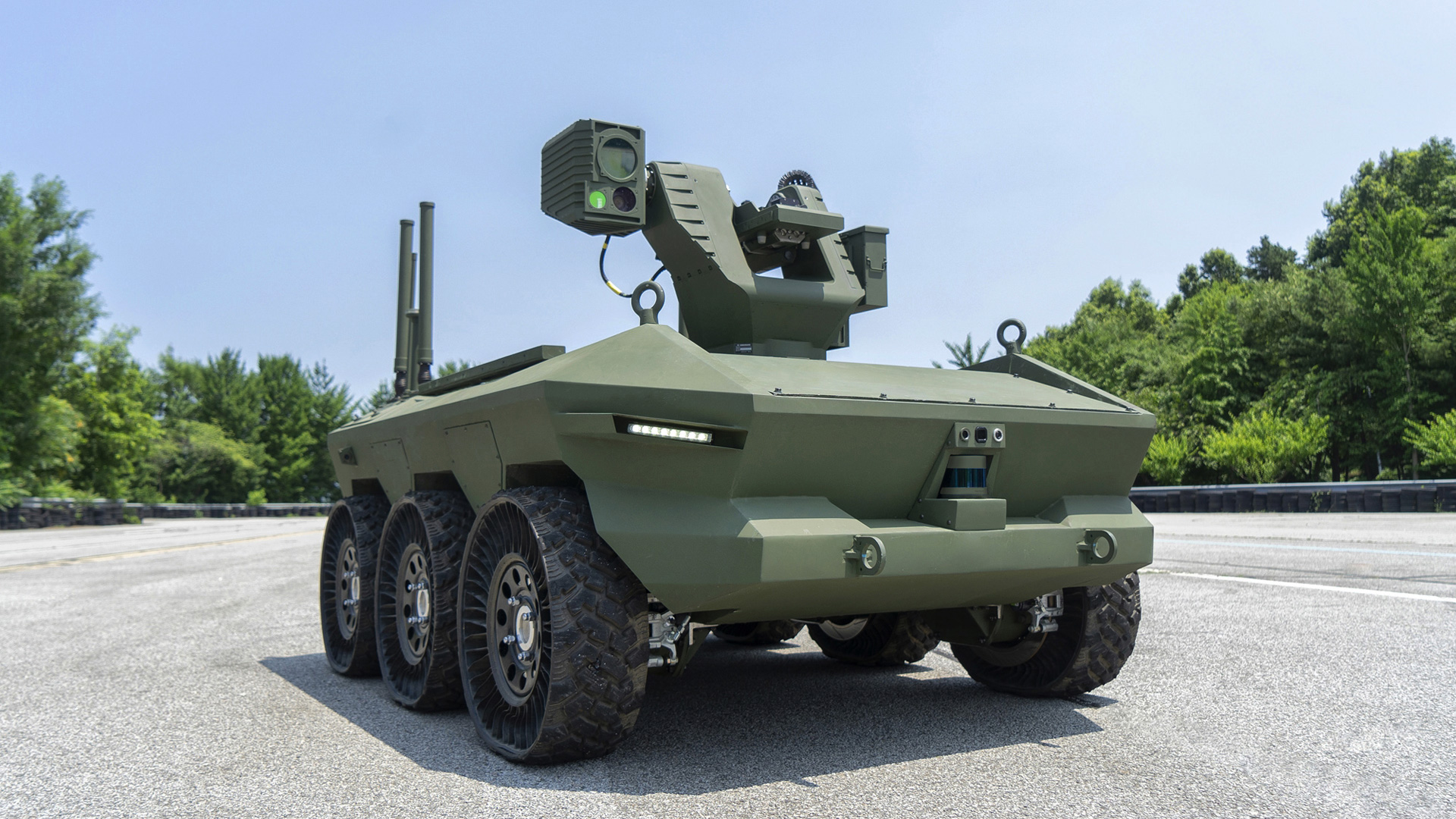
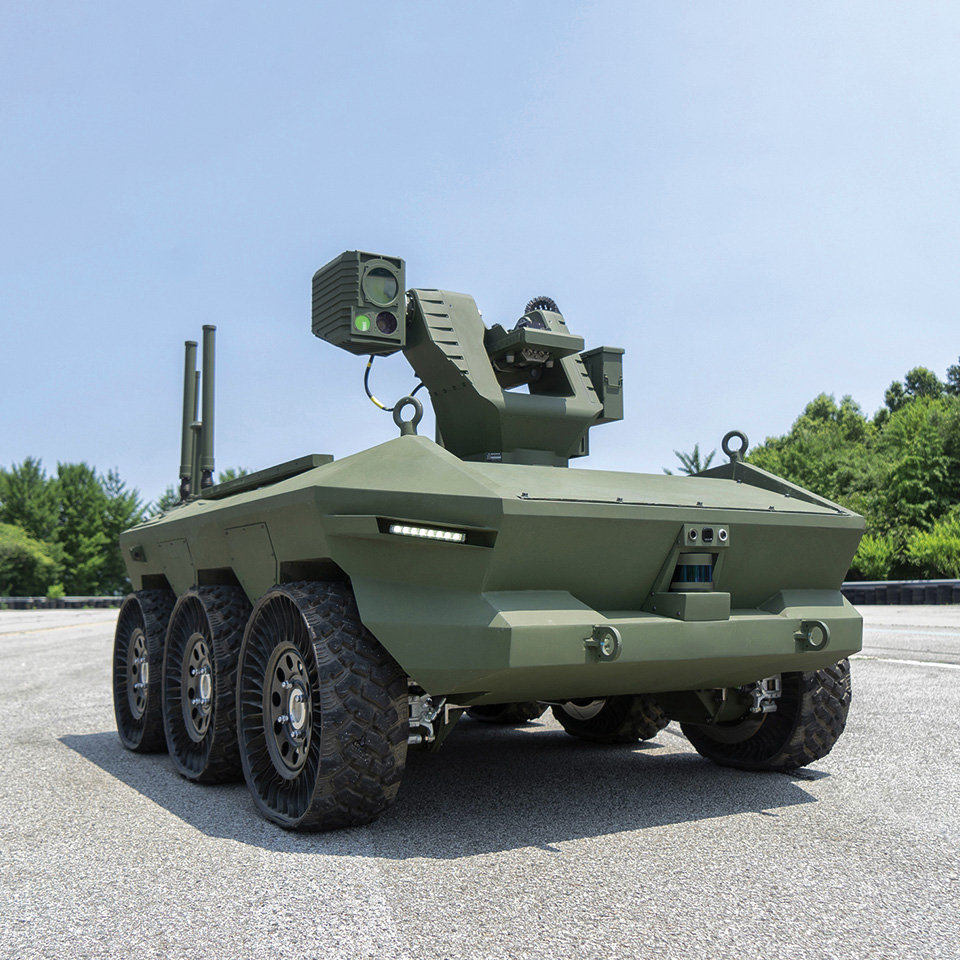


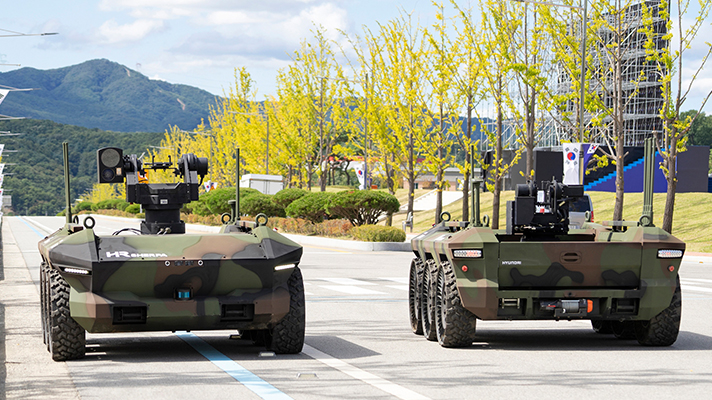
Did you know that many military technologies have transformed our lives and are applied in various areas? Since the first concept model was released in 2019, the first Korean military unmanned vehicle, Hyundai Rotem’s multi-purpose unmanned vehicle revealed in July has various new technologies applied. This vehicle is a function fortified model based on ‘HR-Sherpa,’ developed by Hyundai Rotem in response to the 4th industrial revolution. Here are the characteristics of Hyundai Rotem’s HR-Sherpa and multi-purpose unmanned vehicles along with military technologies we can find within our everyday lives.

Military technology seems difficult for no reason because of the unfamiliar terminology. But GPS (Global Positioning System), which is used for location-based services like navigation, which informs us of the quickest route to our destination, and delivery applications that allow one to deliver food conveniently was first developed for military purposes. When it was first developed, it was mainly used for interception missile inducements, etc., but after the Cold War ended, the range of utilization gradually expanded to private sectors.
Same goes for drones (unmanned aircrafts). Unmanned aircrafts used at the Air Force are now used in private sectors like agriculture, delivery, and filming in various forms. As such, there are more technologies that were first developed for military purposes but with time that are applied in our everyday lives, and they are picking up speed in their increase. HR-Sherpa and multi-purpose unmanned vehicles Hyundai Rotem developed for both private and military purposes also have technologies that make our lives more convenient like the next generation tire technology and autonomous driving system applied.
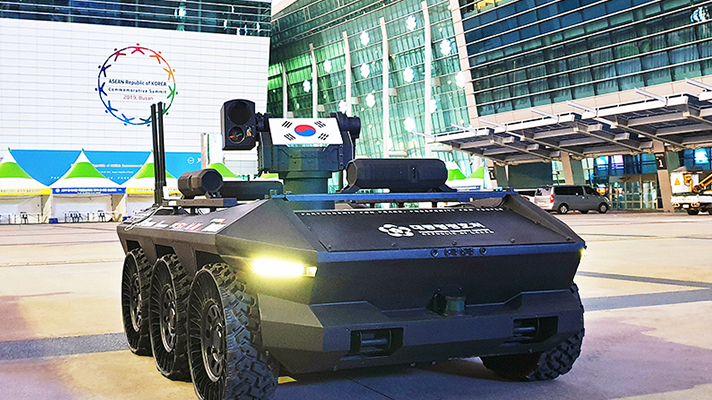
HR-Sherpa is an electricity-driven multi-purpose unmanned vehicle developed for private and military purposes both. It is the result of Hyundai Rotem’s unmanned system R&D. Its concept model was first revealed at the ‘2018 Robotworld’ exhibition, and in various events like ‘2019 KoreaㆍASEAN Special Summit,’ ‘the 72nd Armed Forces Day commemoration event,’ and ‘DX Korea 2020,’ it successfully demonstrated security reconnaissance and unmanned operation capacities.
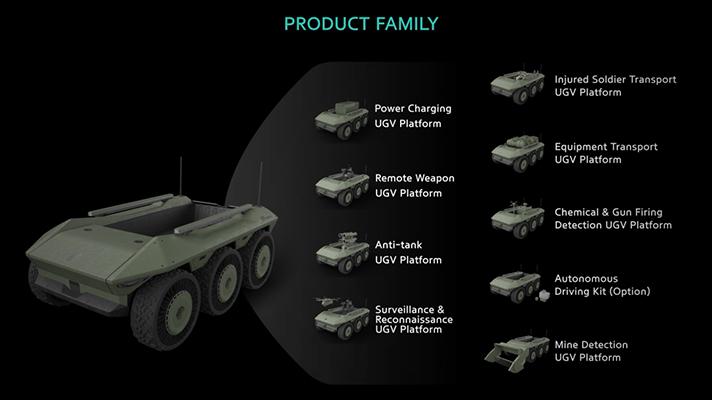
HR-Sherpa can be loaded with a remote armed device, RCWS (Remote Controlled Weapon Station). The remote armed device refers to a system that can send surveillance footage real time to determine attack remotely unlike the previous method of determining attack through naked eye recognition and oral report. Through this, one can carry out efficient strategies compared to the manned system and also carry out remote attacks and self-defense tasks.
There’s also the subordination driving, which allows it to follow the soldier in front of the vehicle automatically and the autonomous driving function, which allows making self-searches for designated routes for surveillance. Such state-of-the-art sensor technologies can also be experienced in the vehicles we ride. They are applied to the driver assistance system and autonomous driving technology to prevent driver accidents. A car determines distance from the vehicle or pedestrian in front, driver response, etc., to pace itself on its own and prevents the driver from deviating from the lane. HR-Sherpa is also distinct in being able to load module devices. With a single platform, it can be utilized in both private and military sectors for purposes like fire support, surveillance reconnaissance, supply transfer, etc., and is also equipped with the loading box for things that weigh more than 200kg, fit for patient transfer and various supply delivery, which makes it very attractive for its usage in the private sector.

HR-Sherpa is equipped with special wheels; in-wheel motor applied to all six wheels. The in-wheel motor refers to a driving system with a motor (drive train) within a wheel. As the driving power is delivered directly to the wheel, its energy efficiency is high while each wheel’s driving power can individually be controlled. Even if 1 or 2 wheels are damaged, the rest will be sufficient to keep the vehicle moving. Also, the existing drive train, which took up a large space, is now inside the wheel, acquiring additional space inside and reducing the vehicle weight.
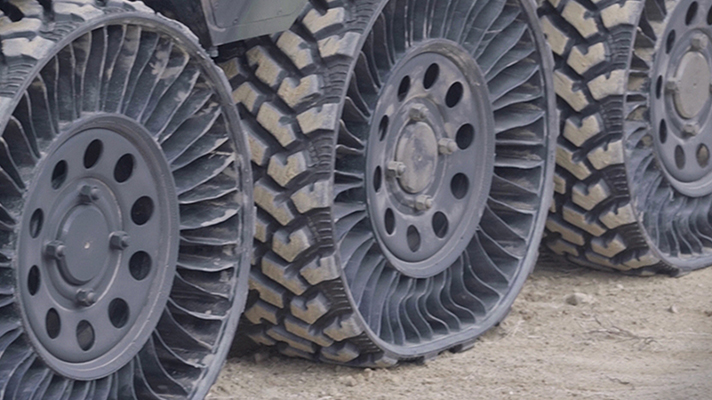
HR-Sherpa also has the airless tires. As the name gives it away, airless tire is a tire that is structurally designed without air. It has the advantage of not having to worry about punctures. The vehicle can still run even if the tire gets a hole and is also free of one-sided wear caused by differences in air pressure. When such technology is implemented onto regular cars, the shortcomings of the existing tire can be resolved as it not only provides the stable sense of driving but also a consistent frictional force at all times. For example, you can avoid being in a dangerous situation caused by a sudden tire puncture during driving on a highway while tire management will also be easier as the tire locations can be switched to reduce one-sided wear.
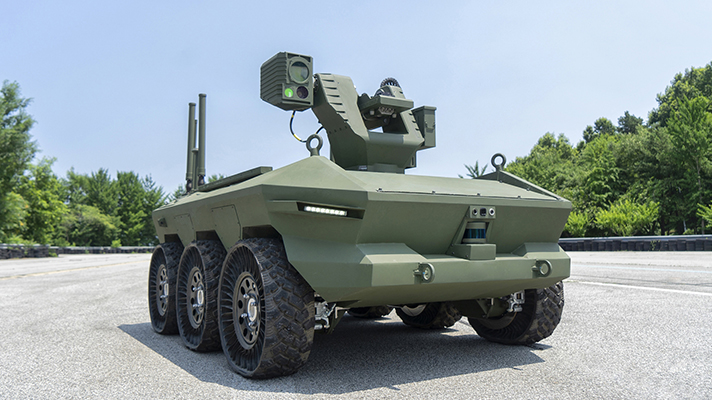
Recently Hyundai Rotem successfully supplied 2 HR-Sherpa-improved multi-purpose unmanned vehicles to the army, proving their functions and quality. All 25 required function evaluation items including maximum speed, going up the mount function (ability to drive on hill), and range were all satisfied; the beginning of the unmanned military equipment system has now begun. The major characteristics involve technologies implemented onto the existing HR-Sherpa and the upgraded autonomous driving sensor to reinforce functions required for military operations.
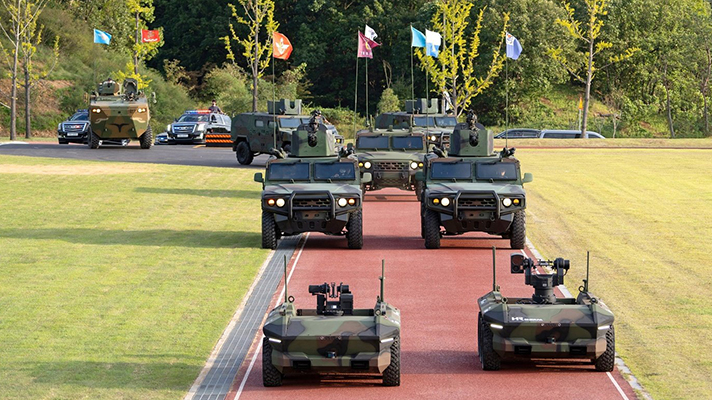
Hyundai Rotem conducts R&D to assure stable operation of unmanned vehicles and to secure product reliability. So far, they have developed a technology to recognize the surrounding environment that makes use of the LiDAR (Light Detection and Ranging) and video device sensor as well as an artificial intelligence technology that can allow a vehicle to make self-recognitions of things and possible areas for driving. Such unmanned systems and technologies are expected to be of high use in the private sector as well. Please look forward to how the technologies implemented on Hyundai Rotem’s HR-Sherpa and multi-purpose unmanned vehicles will be utilized in our every day lives.
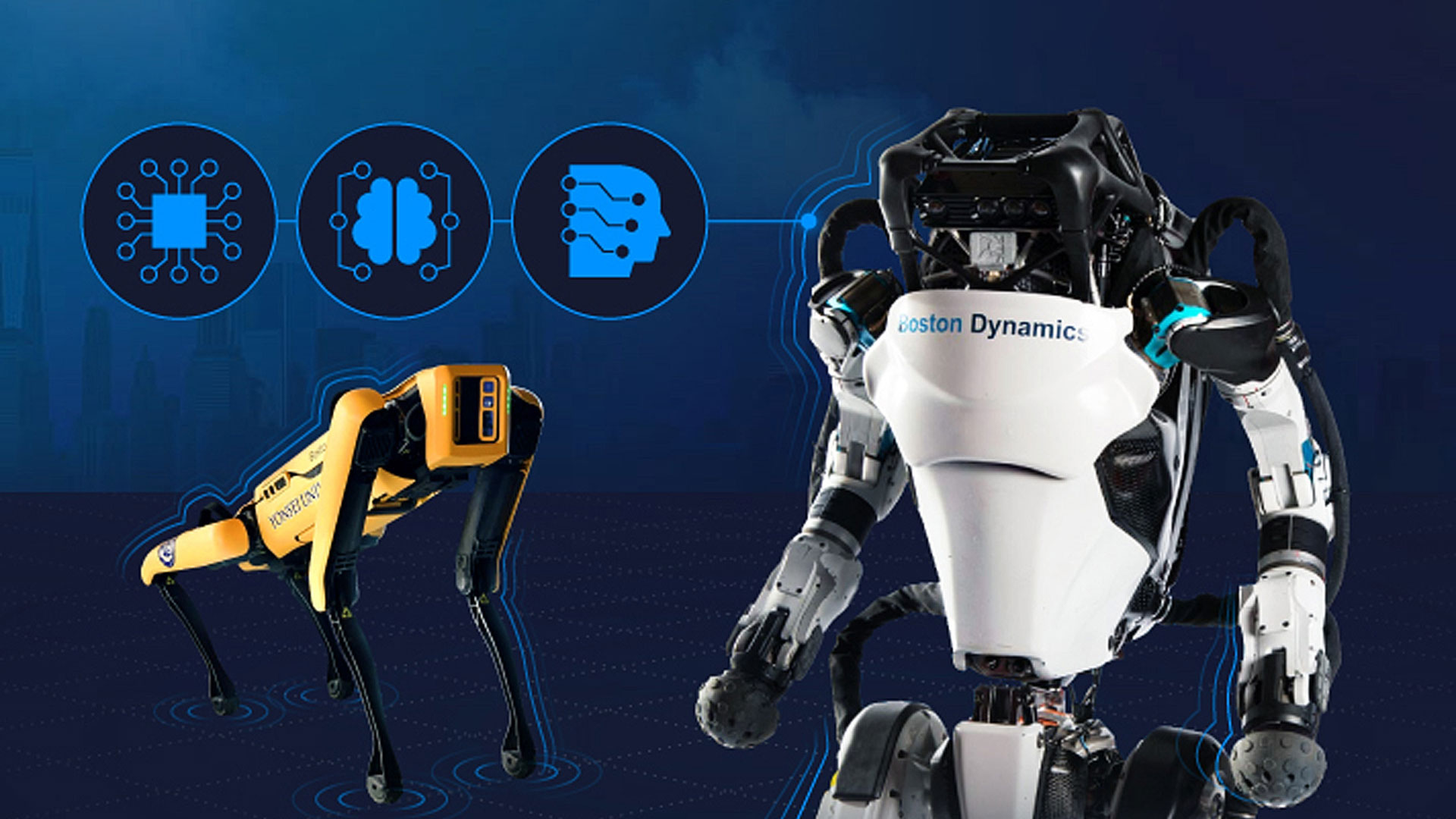
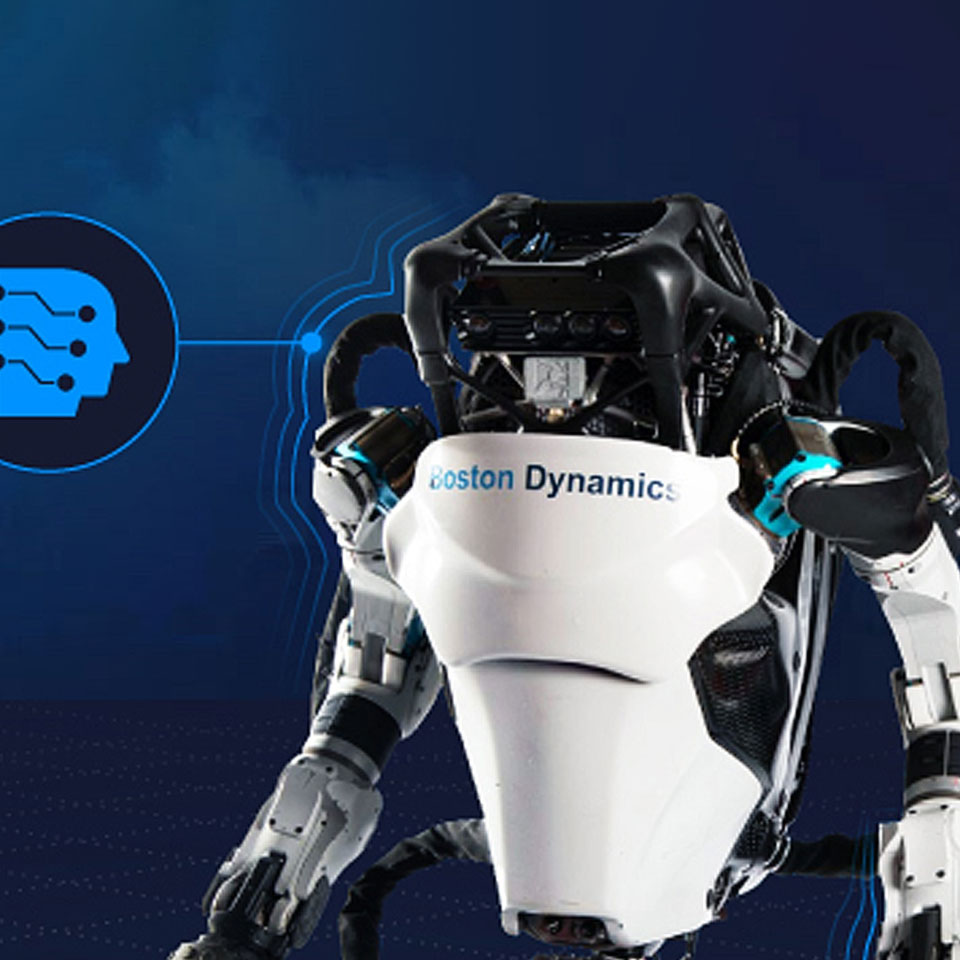
[Op-ed] Robots Jump into the Mobility Industry
2021.01.21 19min read